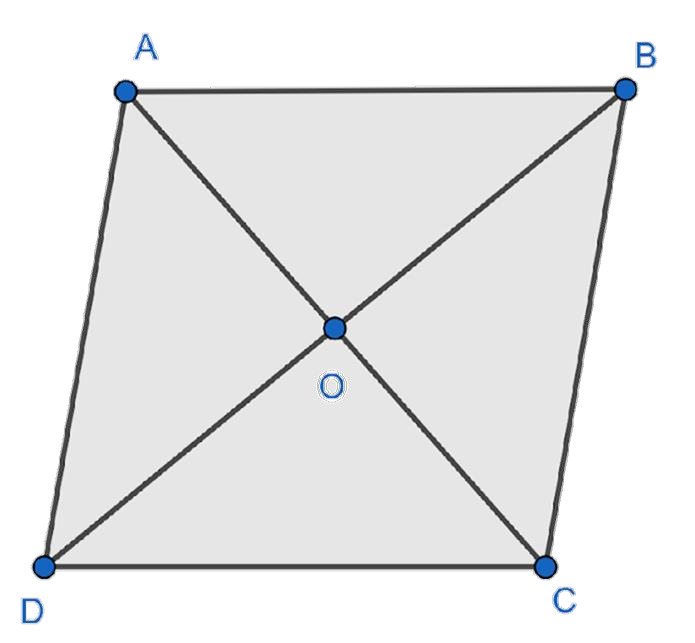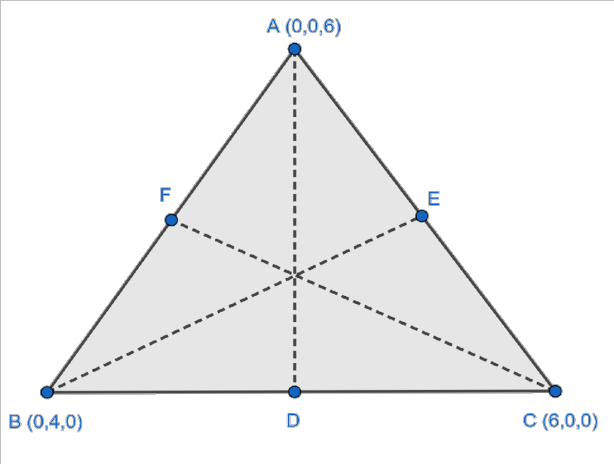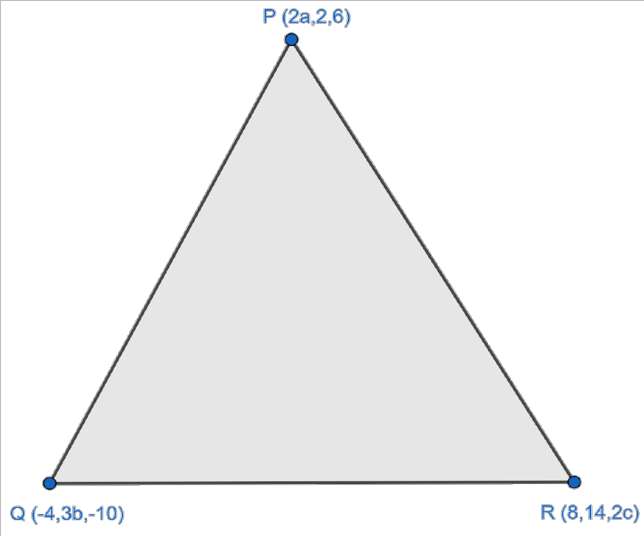Introduction To Three Dimensional Geometry Questions and Answers - Free PDF Download
FAQs on NCERT Solutions For Class 11 Maths Miscellaneous Exercise Chapter 11 Introduction To Three Dimensional Geometry - 2025-26
1. How are NCERT Solutions for Class 11 Maths Chapter 11 structured to help solve three-dimensional geometry problems step by step?
The NCERT Solutions for Class 11 Maths Chapter 11 are organised by type of problem, beginning with foundational concepts such as locating points in 3D space, and progressing to direction ratios, lines, and planes. Each question is solved using a step-by-step method that starts with identifying what is given and what needs to be found, choosing the correct formula, substituting values accurately, and completing calculations one step at a time for clarity and precision.
2. What methods are commonly used in NCERT Solutions for calculating the coordinates of a point in three-dimensional space?
To calculate coordinates in 3D, common methods include the distance formula (for finding the distance between two points), and the section formula (for finding a point dividing a line segment in a given ratio). The mid-point formula is also frequently applied for finding the midpoint of a segment. Mastering these techniques is essential for solving placement and division problems in 3D geometry.
3. Which common mistakes should be avoided while attempting NCERT Solutions of Class 11 Maths Chapter 11?
Some frequent mistakes to avoid include:
- Incorrectly substituting coordinate values in formulas
- Misunderstanding or omitting direction ratios
- Sign errors in algebraic calculations
- Forgetting the 3D context, leading to missed axes in solutions
Carefully double-check each calculation, especially when working with negative or decimal coordinates.
4. How do direction ratios and direction cosines differ, and why is this distinction important in solving 3D geometry questions?
Direction ratios describe the proportional direction of a line in 3D space and can be any multiple of a set of numbers. Direction cosines are the cosines of the angles that a line makes with the coordinate axes and are uniquely determined. Understanding this distinction is crucial because equations of lines require either, but only direction cosines are normalised and directly relate to spatial orientation.
5. In what ways does solving NCERT Solutions for Miscellaneous Exercises improve preparation for board exams and competitive tests?
Solving Miscellaneous Exercises from NCERT Solutions for Class 11 Maths Chapter 11 strengthens problem-solving skills, enhances analytical thinking, and provides a deeper understanding of complex spatial relationships and formulas. This thorough practice is key to answering higher-order and application-based questions seen in board and entrance exams.
6. How is the equation of a plane determined using NCERT Solutions methods in Chapter 11?
The equation of a plane in three-dimensional space is determined by knowing either a point on the plane and the normal vector to the plane, or three non-collinear points lying on the plane. Using these, the general form ax + by + cz + d = 0 is established and solved stepwise for required unknowns following the NCERT methodology.
7. Why is understanding the coordinate axes fundamental for working with 3D geometry in this chapter?
The x, y, and z axes form the basis of three-dimensional geometry, allowing precise location of any point in space. Grasping this framework is essential to visualise, develop equations, and interpret relationships between points, lines, and planes effectively in both academic and real-world contexts.
8. How can the concept of centroid be applied in NCERT Solutions problems involving three-dimensional triangles?
The centroid of a triangle in 3D is the average of the coordinates of its three vertices. This concept is used to solve problems involving balance, symmetry, and to determine unknown parameters when the centroid is given or needs to be found, employing the formula:
- Centroid = ((x₁ + x₂ + x₃)/3, (y₁ + y₂ + y₃)/3, (z₁ + z₂ + z₃)/3)
Mastery of this idea is vital for several higher-order questions in the chapter.
9. What are the major types of problems covered in the Miscellaneous Exercise of Class 11 Maths Chapter 11 NCERT Solutions?
The Miscellaneous Exercise comprises a mix of questions on:
- Finding distances and midpoints
- Applying section and ratio formulas
- Working with direction ratios and cosines
- Formulating equations of lines and planes
- Application-based and HOTS (Higher Order Thinking Skills) problems
This diverse practice ensures a well-rounded grasp of three-dimensional geometry concepts.
10. How does the stepwise approach recommended in NCERT Solutions help in avoiding calculation errors in 3D geometry?
The recommended stepwise approach ensures that each formula is correctly applied, all substitutions are checked, and every calculation is performed methodically. This systematic process reduces confusion, especially in multi-step problems, and is particularly important when working with negative or fractional coordinates commonly found in Class 11 3D geometry problems.



























